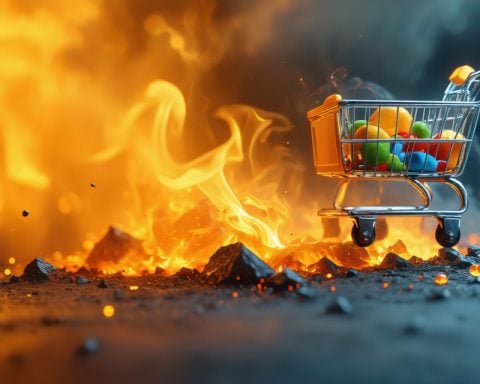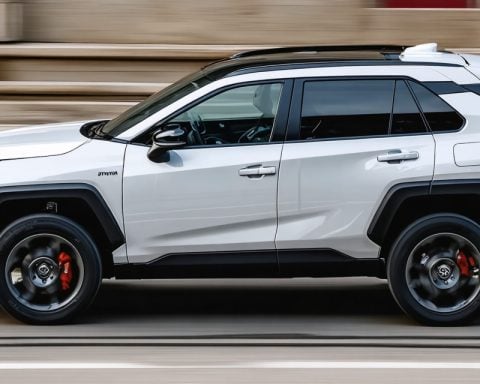Fire Emergency Sparks Alarm in Ojai
On a seemingly ordinary Saturday morning in Ojai, California, a Volvo XC90 hybrid vehicle was engulfed in flames, prompting a rapid emergency response from local firefighters. At around 9:30 a.m., the Ventura County fire team rushed to the scene to combat the fierce blaze originating from the vehicle’s lithium-ion battery.
Upon arrival, first responders identified a critical situation involving a phenomenon known as thermal runaway, characterized by uncontrolled temperature increases within the battery. This condition rendered standard firefighting techniques ineffective, leading officials to prioritize public safety over immediate extinguishment.
To safeguard residents, emergency teams swiftly evacuated those in the vicinity who might be affected by toxic smoke, while advising others to remain indoors. By midday, the intensity of the smoke had decreased, allowing authorities to lift some evacuation restrictions. Drones equipped with infrared cameras monitored the heat emitted by the burning vehicle, ensuring that it remained safe to approach.
This alarming incident highlights the unique challenges posed by the increasing prevalence of hybrid vehicles in the U.S., accounting for nearly 9% of new car sales. As hybrids gain popularity, it raises critical questions about safety protocols and environmental impacts surrounding lithium-ion batteries. The situation in Ojai serves as a stark reminder for communities to reconsider their emergency response strategies in light of these modern automotive advancements.
The Broader Implications of Hybrid Vehicle Fires
The incident in Ojai is part of a growing narrative around the implications of hybrid vehicle technology, which holds significant sway over our society, culture, and the global economy. As hybrid models make up an increasing percentage of vehicle sales—projected to hit over 30% by 2030—the pressing need for infrastructure and regulatory updates becomes apparent. This technology, while heralded for reducing fossil fuel dependence, raises urgent safety concerns about battery management, emergency response protocols, and long-term strategies to effectively address potential hazards.
From an environmental standpoint, the proliferation of hybrid vehicles, while beneficial for reducing greenhouse gas emissions during operation, poses a dilemma regarding battery disposal and recycling. Lithium-ion batteries, if not properly managed, can lead to soil and water contamination. Future trends suggest heightened regulatory scrutiny as manufacturers innovate to create safer battery technologies and disposal methods. Notably, some experts are advocating for circular economy solutions, aiming to repurpose or recycle battery components, thus minimizing environmental fallout.
In essence, the growing reliance on hybrid technology illustrates a complex interplay between innovation and risk management. As we push towards a more sustainable future, community awareness and preparedness need to evolve in tandem, ensuring that the benefits of these vehicles do not come at the cost of public safety or environmental health. Understanding these dynamics is crucial as society navigates the path forward in a rapidly changing automotive landscape.
Alarming Fire Incident in Ojai: Understanding Lithium-Ion Battery Risks
Overview of the Incident
On a seemingly ordinary Saturday morning, a Volvo XC90 hybrid vehicle erupted into flames in Ojai, California, leading to a swift response from the Ventura County fire department. The incident occurred at approximately 9:30 a.m. and was attributed to a malfunction of the vehicle’s lithium-ion battery, which sparked concerns about safety and emergency preparedness in the face of the growing number of hybrid cars on the road.
Understanding Thermal Runaway
The fire was exacerbated by a phenomenon known as thermal runaway, where the internal temperature of the battery increases uncontrollably. This type of incident presents unique challenges for firefighters, as traditional firefighting techniques can be less effective against battery fires. Such occurrences exemplify the need for first responders to be equipped with specialized training and tools to handle the risks associated with lithium-ion batteries in electric and hybrid vehicles.
Emergency Response Measures
Upon arrival, firefighters prioritized evacuating nearby residents to safeguard them from potential exposure to toxic smoke. The blaze generated significant smoke, leading to public safety advisories to remain indoors. The emergency response also included using drones equipped with infrared technology to monitor the situation, providing real-time data to ensure that it was safe for personnel to approach the vehicle as the situation developed.
By midday, as the smoke subsided, authorities were able to lift some evacuation restrictions, indicating a controlled response to the incident.
Safety Protocols for Hybrid Vehicles
This incident raises critical awareness about the necessary safety protocols in response to hybrid vehicle incidents. With hybrid cars becoming a popular choice—accounting for nearly 9% of new car sales in the U.S.—the importance of effective emergency response strategies cannot be overstated. Fire departments across the country may need to revise training and response protocols to address the unique hazards posed by lithium-ion battery fires.
Trends in Hybrid Vehicle Sales
The increasing adoption of hybrid vehicles reflects a broader trend towards environmentally friendly transportation options. As more consumers opt for hybrids to reduce their carbon footprint, automotive manufacturers are investing in battery technology that may provide safer, more efficient performance. However, this transition also necessitates a rigorous assessment of safety features and emergency preparedness.
Tips for Vehicle Owners
Vehicle owners can take several proactive steps to enhance safety:
1. Regular Maintenance: Ensure that the vehicle is regularly serviced and that any recall notices, particularly those related to the battery, are addressed.
2. Recognize Warning Signs: Be aware of any unusual behaviors such as overheating, strange smells, or leaks from the battery compartment.
3. Knowledge is Power: Familiarize yourself with the manufacturer’s guidelines regarding battery care and emergency procedures.
4. Emergency Preparedness: Develop an emergency plan that includes steps to take in the event of a fire or battery malfunction.
Conclusion: A Call for Preparedness
The recent fire incident in Ojai serves as a critical reminder for individuals, communities, and emergency responders to evaluate current safety protocols and emergency response measures. As hybrid vehicles continue to gain traction, fostering awareness and preparedness is essential for minimizing risks associated with these modern automobiles.
For more information on the safety measures related to hybrid cars, visit National Highway Traffic Safety Administration.













